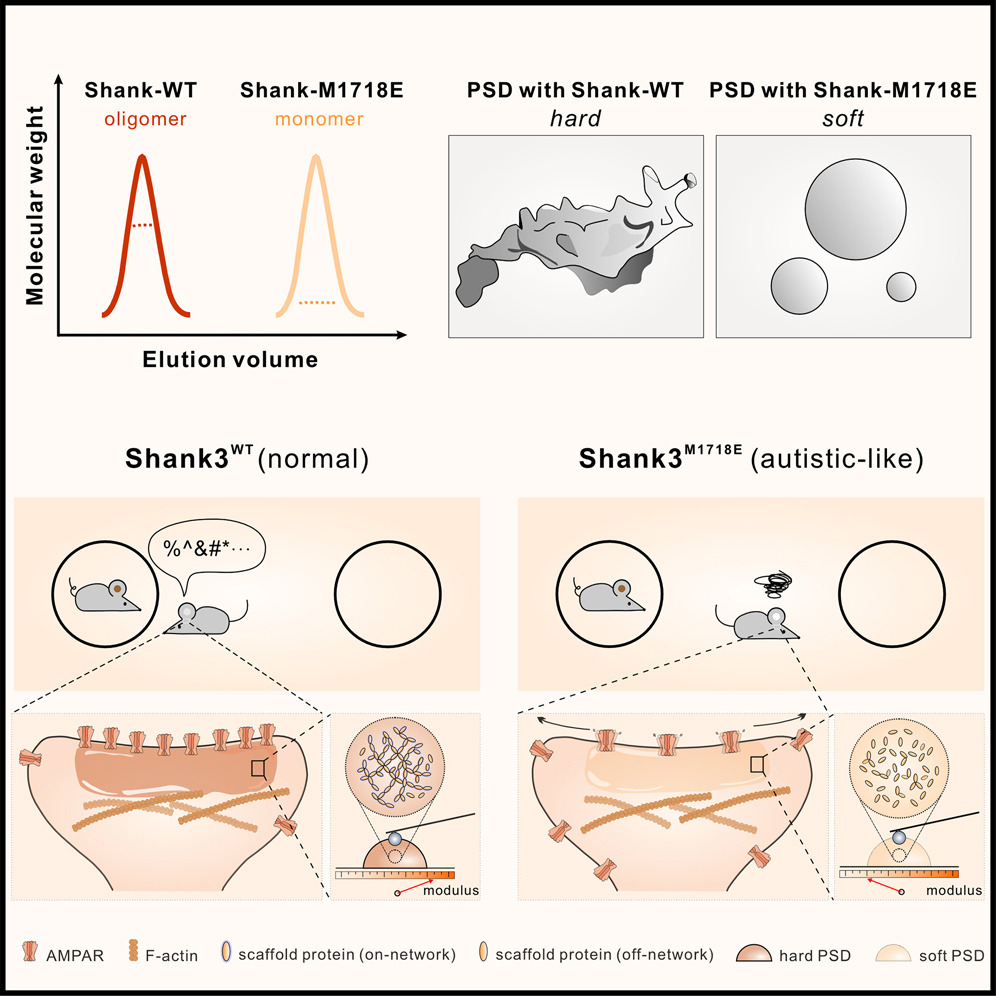Phase separation at the synapse
2020.02.03Chen, X., Wu, X., Wu, H., & Zhang, M. (2020). Nature neuroscience, 23(3), 301-310.
Emerging evidence indicates that liquid–liquid phase separation, the formation of a condensed molecular assembly within another diluted aqueous solution, is a means for cells to organize highly condensed biological assemblies (also known as biological condensates or membraneless compartments) with very broad functions and regulatory properties in different subcellular regions. Molecular machineries dictating synaptic transmissions in both presynaptic boutons and postsynaptic densities of neuronal synapses may be such biological condensates. Here we review recent developments showing how phase separation can build dense synaptic molecular clusters, highlight unique features of such condensed clusters in the context of synaptic development and signaling, discuss how aberrant phase-separation-mediated synaptic assembly formation may contribute to dysfunctional signaling in psychiatric disorders, and present some challenges and opportunities of phase separation in synaptic biology.
- Recommend
-
2025-10-22
IQSEC2/BRAG1 may modulate postsynaptic density assembly through Ca2+-induced phase separation.
-
2025-08-22

Shank3 oligomerization governs material properties of the postsynaptic density condensate and synaptic plasticity.
-
2025-08-21
Modulating synaptic glutamate receptors by targeting network nodes of the postsynaptic density condensate.
-
2025-08-19
Current practices in the study of biomolecular condensates: a community comment.
-
2025-06-10
Phase separation instead of binding strength determines target specificities of MAGUKs.

